The following is a list of useful documents that can be referenced when working with Native populations:
Publication Date: February 2019
Developed by SAMHSA, TIP 61 provides behavioral health professionals with practical guidance about Native American history, historical trauma, and critical cultural perspectives in their work with American Indian and Alaska Native clients. The TIP discusses the demographics, social challenges, and behavioral health concerns of Native Americans. It highlights the importance of providers’ cultural awareness, cultural competence, and culture-specific knowledge. The TIP also helps administrators, program managers, and clinical supervisors foster a culturally responsive environment for American Indian and Alaska Native clients. Specific topic areas include workforce development strategies, program and professional development considerations, and culturally responsive policies and procedures.
Link: https://store.samhsa.gov/system/files/tip_61_aian_full_document_020419_0.pdf
Publication Date: January 2009
Developed by SAMHSA, this guide enhances cultural competence when serving American Indian and Alaska Native communities. It covers regional differences, cultural customs, spirituality, communication styles, the role of veterans and older adults, and health disparities.
Link: https://store.samhsa.gov/system/files/sma08-4354.pdf
Publication Year: 2016
Published by Council of National Psychological Associations for the Advancement of Ethnic Minority Interests (CNPAAEMI), this monograph on testing and assessment among racial/ethnic minorities is the fourth in a series of monographs to address diversity issues pertaining to core activities undertaken by psychologists in service of the major racial/ethnic minority populations in the United States.
Link: https://www.apa.org/pi/oema/resources/testing-assessment-monograph.pdf
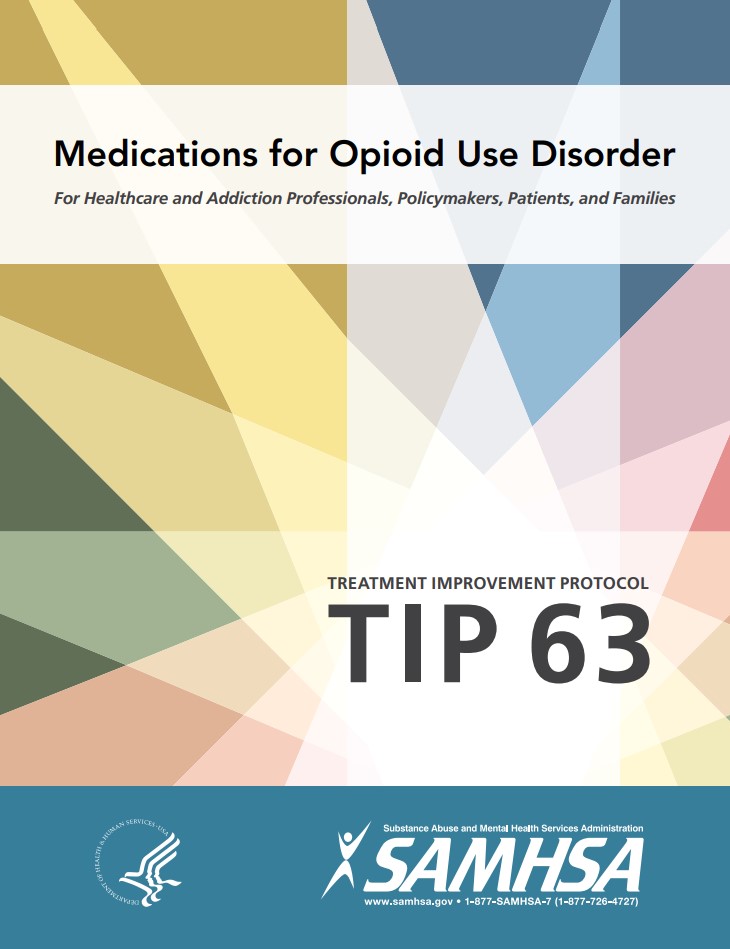 MEDICATIONS FOR OPIOID USE DISORDER: FOR HEALTHCARE AND ADDICTION PROFESSIONALS, POLICYMAKERS, PATIENTS, AND FAMILIES
MEDICATIONS FOR OPIOID USE DISORDER: FOR HEALTHCARE AND ADDICTION PROFESSIONALS, POLICYMAKERS, PATIENTS, AND FAMILIESPublication Date: June 2018
Published by SAMHSA, this Treatment Improvement Protocol (TIP) reviews the use of the three Food and Drug Administration (FDA)-approved medications used to treat opioid use disorder (OUD)—methadone, naltrexone, and buprenorphine—and the other strategies and services needed to support recovery for people with OUD.
Link: https://store.samhsa.gov/system/files/sma18-5063fulldoc_0.pdf
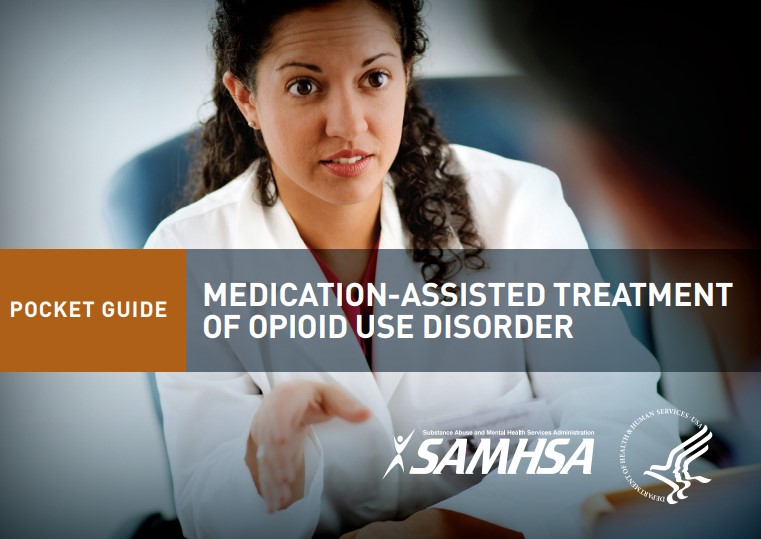 POCKET GUIDE MEDICATION-ASSISTED TREATMENT OF OPIOID USE DISORDER
POCKET GUIDE MEDICATION-ASSISTED TREATMENT OF OPIOID USE DISORDERPublication Date: March 2016
Published by SAMHSA, this guide is for physicians using medication-assisted treatment for patients with opioid use disorder. It discusses various types of approved medications, screening and assessment tools, and best practices for patient care.
Link: https://store.samhsa.gov/system/files/sma18-5063fulldoc_0.pdf
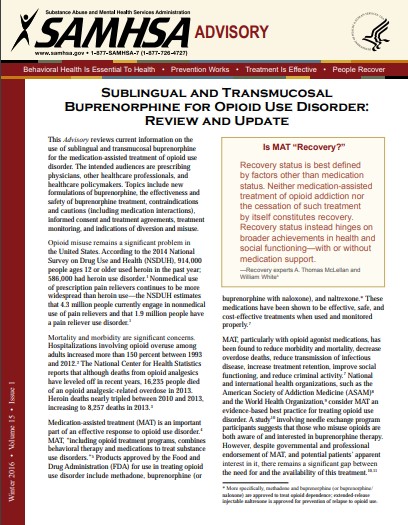 SUBLINGUAL AND TRANSMUCOSAL BUPRENORPHINE FOR OPIOID USE DISORDER: REVIEW AND UPDATE
SUBLINGUAL AND TRANSMUCOSAL BUPRENORPHINE FOR OPIOID USE DISORDER: REVIEW AND UPDATEPublication Date: March 2016
Published by SAMHSA, this advisory summarizes data on the use of sublingual and transmucosal buprenorphine for the medication-assisted treatment of opioid use disorder.
Link: https://store.samhsa.gov/system/files/sma18-5063fulldoc_0.pdf
 KEY SUBSTANCE USE AND MENTAL HEALTH INDICATORS IN THE UNITED STATES: RESULTS FROM THE 2016 NATIONAL SURVEY ON DRUG USE AND HEALTH
KEY SUBSTANCE USE AND MENTAL HEALTH INDICATORS IN THE UNITED STATES: RESULTS FROM THE 2016 NATIONAL SURVEY ON DRUG USE AND HEALTHPublication Date: September 2017
Published by SAMHSA, this this report presents 2016 national estimates of use of alcohol, tobacco products, illicit drugs (such as, marijuana, cocaine, heroin, hallucinogens, and inhalants, as well as the misuse of opioids, prescription pain relievers, tranquilizers, stimulants, and sedatives), substance use disorders, and substance use treatment among people 12 years of age and older. It Includes national estimates of any mental illness, serious mental illness, major depressive episode, use of mental health services and suicidal ideation among adults ages 18 or older and national estimates of major depressive episode, use of mental health services among adolescents aged 12 to 17. Trend information on these topics are also presented.
Link: https://store.samhsa.gov/system/files/sma18-5063fulldoc_0.pdf
 TIPS FOR TEENS: THE TRUTH ABOUT HEROIN
TIPS FOR TEENS: THE TRUTH ABOUT HEROINPublication Date: April 2018
Published by SAMHSA, this factsheet for teens provides facts about heroin. It describes short- and long-term effects and lists signs of heroin use. The factsheet helps to dispel common myths about heroin. Access sources cited in this factsheet.
Link: https://store.samhsa.gov/system/files/pep18-02.pdf
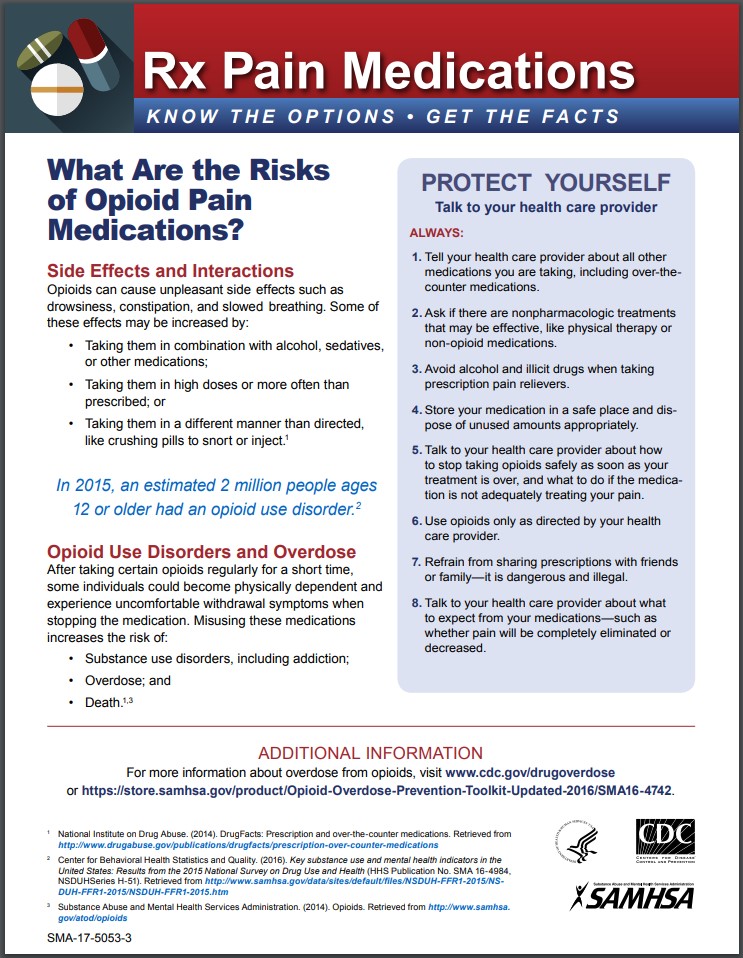 WHAT ARE THE RISKS OF OPIOID PAIN MEDICATIONS?
WHAT ARE THE RISKS OF OPIOID PAIN MEDICATIONS?Publication Date: November 2017
Published by SAMHSA, the Rx Pain Medications. Know the Options. Get the Facts. is a series of 13 fact sheets designed to increase awareness of the risks associated with prescription opioid use and misuse, as well as to educate patients who are prescribed opioids for pain about the risks and to provide resources on methods for alternative pain management. This particular fact sheet focuses on the side effects and interactions of pain medication including opioid use disorder and overdose.
Link: https://store.samhsa.gov/system/files/pep18-02.pdf
 RX Pain Medication, Know the Options, Get the Facts: Dangerous Drug Interactions
RX Pain Medication, Know the Options, Get the Facts: Dangerous Drug InteractionsPublication Date: November 2017
Published by SAMHSA, the Rx Pain Medications. Know the Options. Get the Facts. is a series of 13 fact sheets designed to increase awareness of the risks associated with prescription opioid use and misuse, as well as to educate patients who are prescribed opioids for pain about the risks and to provide resources on methods for alternative pain management. This particular fact sheet focuses on the side effects and interactions of pain medication including opioid use disorder and overdose.
Link: https://store.samhsa.gov/system/files/sma17-5053-2.pdf
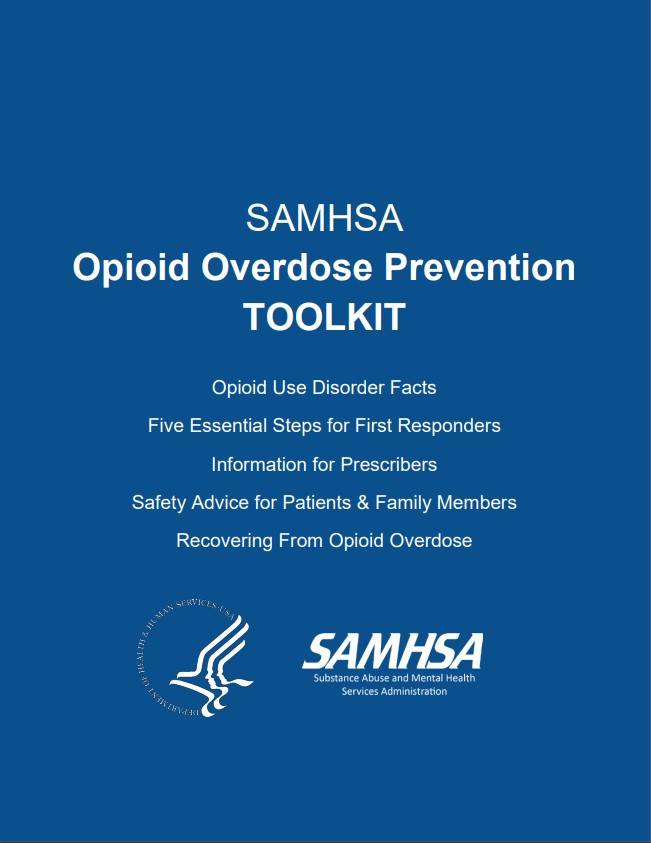 SAMHSA OPIOID OVERDOSE PREVENTION TOOLKIT
SAMHSA OPIOID OVERDOSE PREVENTION TOOLKITPublication Date: June 2018
Published by SAMHSA, this toolkit offers strategies to health care providers, communities, and local governments for developing practices and policies to help prevent opioid-related overdoses and deaths. Access reports for community members, prescribers, patients and families, and those recovering from opioid overdose.
Link: https://store.samhsa.gov/system/files/sma17-5053-2.pdf
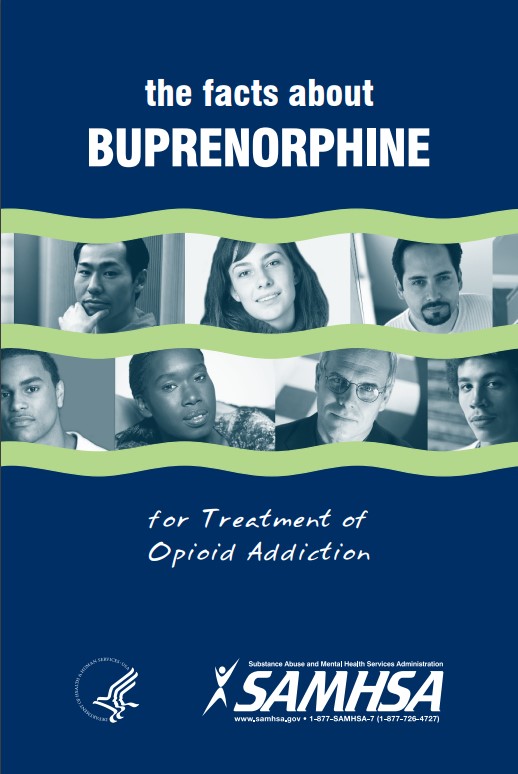 THE FACTS ABOUT BUPRENORPHINE: FOR TREATMENT OF OPIOID ADDICTION
THE FACTS ABOUT BUPRENORPHINE: FOR TREATMENT OF OPIOID ADDICTIONPublication Date: August 2015
Published by SAMHSA, this brochure informs patients about buprenorphine and medication-assisted treatment for opioid use disorder. It describes addiction and withdrawal, how buprenorphine works, its proper use, its side effects, and how it fits with counseling in the recovery process.
Link: https://store.samhsa.gov/system/files/sma17-5053-2.pdf
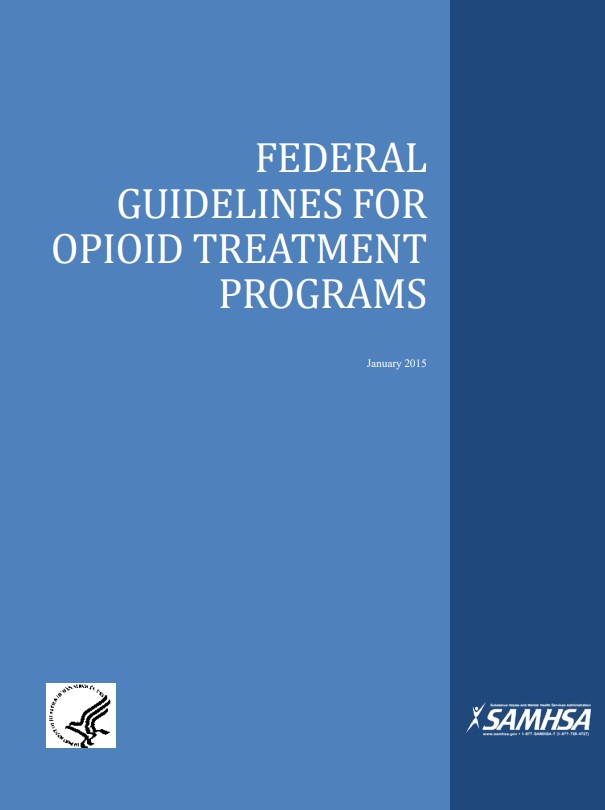 FEDERAL GUIDELINES FOR OPIOID TREATMENT PROGRAMS
FEDERAL GUIDELINES FOR OPIOID TREATMENT PROGRAMSPublication Date: March 2015
Published by SAMHSA, this manual provides guidelines for the operation of opioid treatment programs. It covers patient assessment, treatment planning, and recovery care. The manual also offers guidance for medication-assisted treatment for methadone and buprenorphine, and overdose and relapse prevention.
Link: https://store.samhsa.gov/system/files/sma17-5053-2.pdf
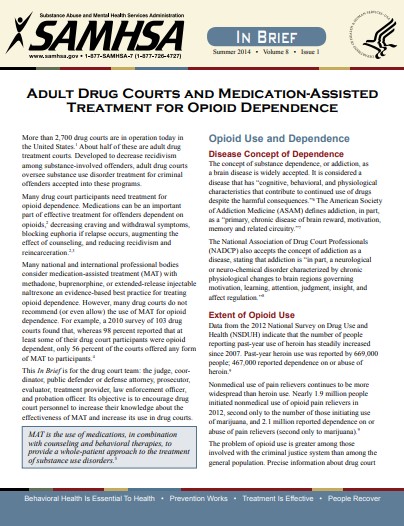 ADULT DRUG COURTS AND MEDICATION-ASSISTED TREATMENT FOR OPIOID DEPENDENCE
ADULT DRUG COURTS AND MEDICATION-ASSISTED TREATMENT FOR OPIOID DEPENDENCEPublication Date: September 2014
Published by SAMHSA, this guide highlights the use of medication-assisted treatment (MAT) for opioid use disorder in drug courts. It reviews effective medications, including methadone, buprenorphine, and naltrexone. The guide also provides strategies to increase the use of MAT in drug court programs.
Link: https://store.samhsa.gov/system/files/sma17-5053-2.pdf
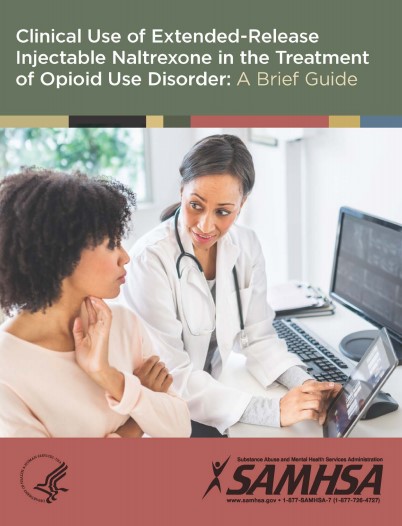 CLINICAL USE OF EXTENDED-RELEASE INJECTABLE NALTREXONE IN THE TREATMENT OF OPIOID USE DISORDER: A BRIEF GUIDE
CLINICAL USE OF EXTENDED-RELEASE INJECTABLE NALTREXONE IN THE TREATMENT OF OPIOID USE DISORDER: A BRIEF GUIDEPublication Date: December 2014
Published by SAMHSA, this guide explains how to use extended-release injectable naltrexone as part of medication-assisted treatment (MAT) for opioid use disorder. It covers assessing patients, initiating MAT, monitoring progress, and deciding when to end treatment.
Link: https://store.samhsa.gov/system/files/sma17-5053-2.pdf
 FIND A STATE-LICENSED PROVIDER WHO SPECIALIZES IN TREATING SUBSTANCE USE DISORDER, ADDICTION, AND MENTAL ILLNESS
FIND A STATE-LICENSED PROVIDER WHO SPECIALIZES IN TREATING SUBSTANCE USE DISORDER, ADDICTION, AND MENTAL ILLNESS Link: https://www.findtreatment.gov/